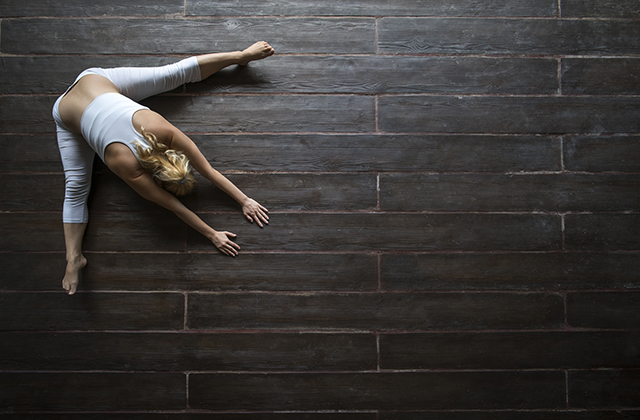If there is one question I receive more than any other question it’s this:
‘How do I become a Pilates instructor?’
So today I’m going to lay out the process to becoming an instructor for those of you who may be interested. Pilates teacher training Sydney mission is to preserve and teach authentic poilates with current and future generations of Pilates Professionals.
Pilates is one of the top fitness trends in the world and has steadily grown in popularity over the past 50+ years. Due to its effectiveness and staying power, I wouldn’t call it a trend. Pilates is here to stay. Which is good news for those of us who have chosen this career path and those who are looking to dive in.
Becoming a Pilates instructor takes time, commitment and money. There is no doubt about that. I think many people make the mistake of lumping it together with general ‘group fitness.’ Group fitness instructors can be certified in one weekend, for a reputable Pilates certification that’s not the case.
6 Steps To Becoming A Pilates Instructor:
1. Take class
Immerse yourself in classes to learn the exercises, learn about your own body and observe other teachers. Take as many as you can and practice consistently. Take from a variety of teachers so that you can determine which style you are drawn to and what kind of path you want to follow. Ask lots of questions and inquire about your favorite teachers’ training and certification.
2. Ask yourself the following questions:
Do I enjoy teaching? (you won’t be doing Pilates yourself, you will be teaching others)
Do I have an interest in body mechanics, anatomy and exercise science?
Do I enjoy speaking in front of large groups? (you will essentially be on stage!)
Am I self-motivated?
Am I okay trading job stability for job flexibility? (you will find your own healthcare, benefits, etc.)
These are just a few questions to consider. There are many more that I may dive into in a separate post.
3. Decide if you want a mat or comprehensive certification
A mat certification prepares you to teach group mat classes, which is what you will find in most gyms. A comprehensive certification prepares you to teach and train clients using the traditional Pilates equipment (reformer, chair, trap table/cadillac, etc.) in addition to mat. If you are hoping to teach ‘full-time’ or train private clients a comprehensive certification is the way to go. It is very, very hard to make a living on mat certification alone.
4. Research and select a Pilates certification program
There are a lot of good programs out there so I encourage you to ask your favorite teachers about their path and recommendations. You will want to determine if you are drawn to the classical or contemporary style of teaching.
A mat certification may cost $100 – $300. For a comprehensive Pilates certification you can expect to pay at least $3,000, quite possibly more.
A reputable certification program should include:
500+ hours of training, practice and student teaching (for comprehensive certification)
recognition from the Pilates Method Alliance
modules that take place over a period of months (not just a weekend or two)
A few that I highly recommend:
Body Arts and Science International (contemporary) – this is my training
Balanced Body University (contemporary) – I currently teaching in a BB studio and absolutely love it
Polestar Pilates (contemporary)
Physical Mind Institute (contemporary)
Peak Pilates (contemporary)
Power Pilates (classical)
Stott Pilates (contemporary)
Romana’s Pilates (classical)
There are many others but these are some of the most widely recognized programs that can be found across the country.
5. Complete your certification process
A mat certification can take a few months, while a comprehensive certification will take 12+ months. Most programs offer flexibility so that you can make it work with your schedule and goals. Your program will require tests and an opportunity to “test out” at the conclusion which will most likely include a written test plus a hands-on practical teaching assessment.
Ideally you’d also find someone to mentor you work through your certification and begin student teaching.
I went through my certification process while working full-time as a project coordinator in a commercial real estate firm. It was busy, but it can be done.
6. Secure liability insurance
Most studios will require that you have your own liability insurance. You can find these online through the PMA, Idea Fit, Lockton Affinity Insurance, or many other outlets.
At this point you are able to pursue teaching opportunities and begin working with clients!
7. PMA certification + continuing education
The Pilates Method Alliance is the governing body for the Pilates industry. Since this is an unregulated industry it’s not required that you acquire certification through the PMA but it is highly recommended. Once you’ve had an opportunity to dive into your teaching career and gain some hands-on experience, it’s a good time to start studying and preparing for the PMA exam. You can find out more here.
As time goes by you should also keep up with continuing education courses.
The truth is, you should never stop learning and growing as a Pilates instructor. When your certification program concludes, it’s really just the beginning of your education.
I am constantly seeking to learn more about the body, healthy movement, and Pilates on a daily basis. There is so much more to know!
I hope this post helps guide those of you who are looking to pursue a career in Pilates.
Do you have questions that I didn’t answer? Post them in the comments. 🙂
Pilates instructors – did I miss anything?

